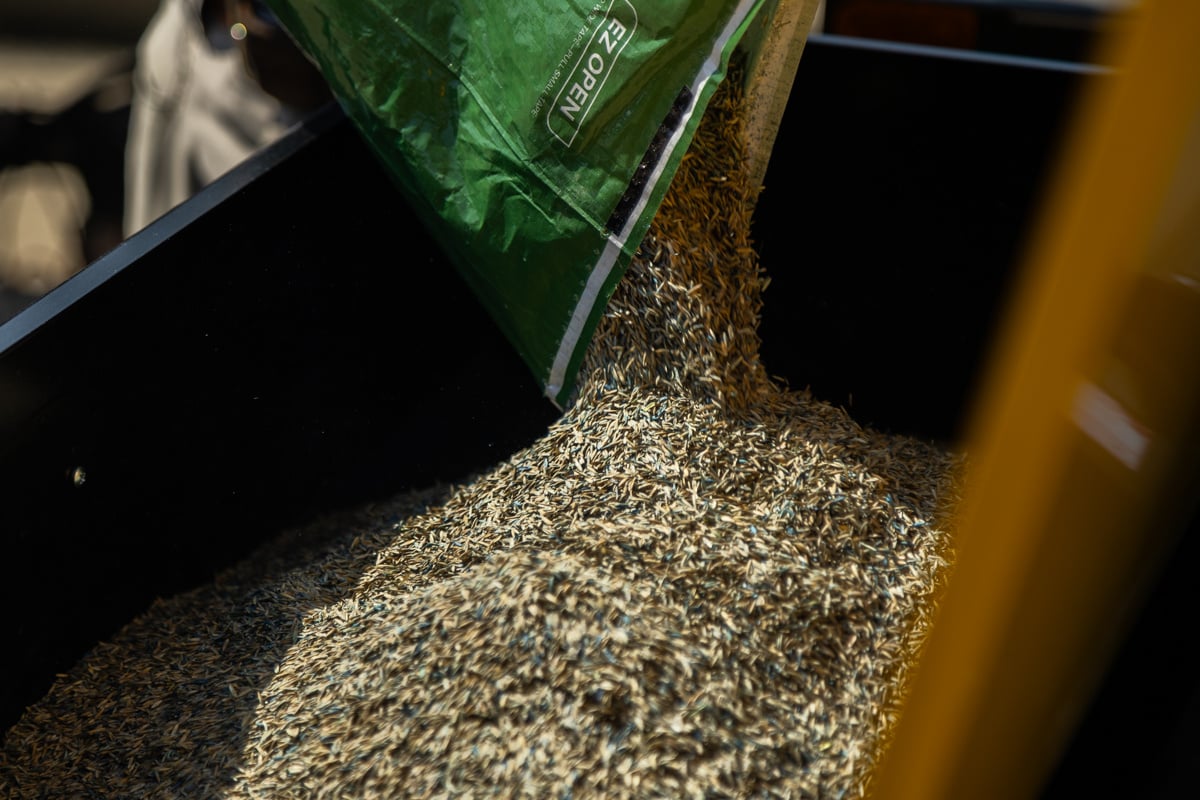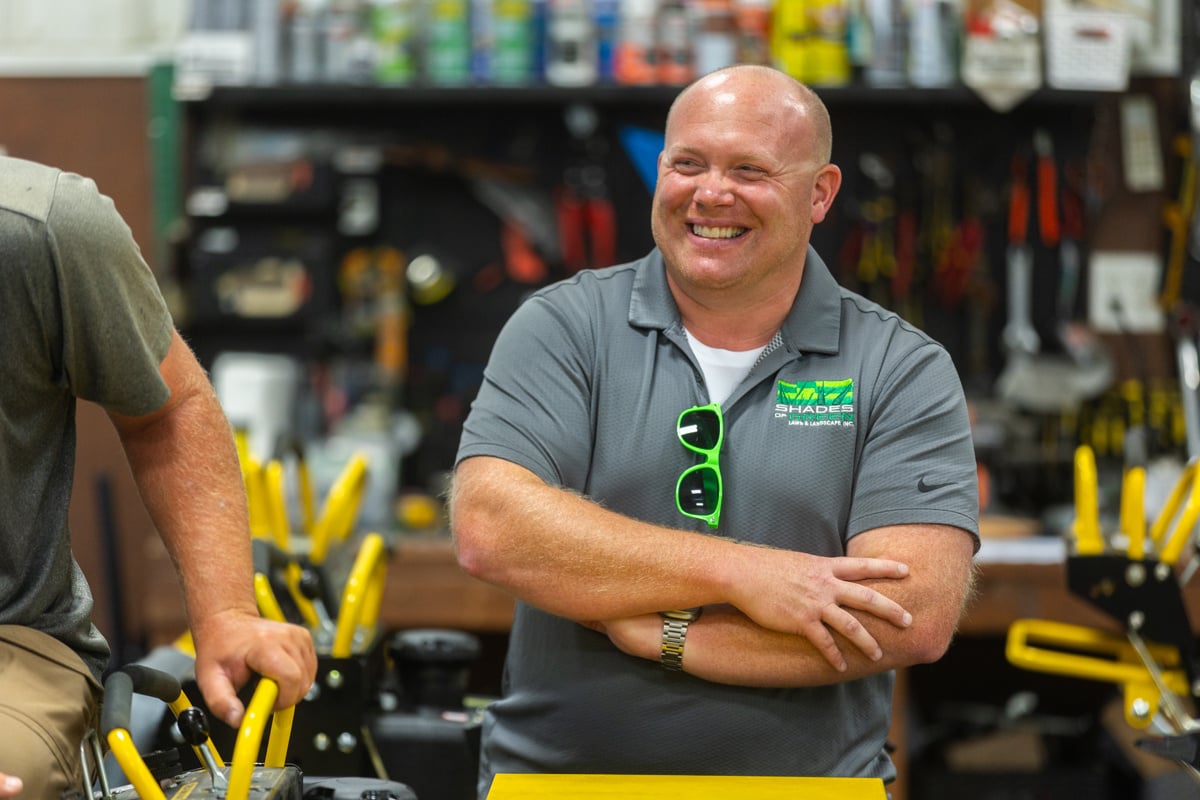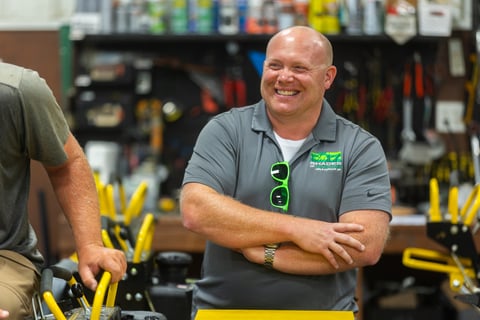
3 Best Grass Types for Indiana Lawns: A Guide for Lafayette Homeowners

Keeping a lawn green and healthy in Indiana’s unpredictable climate can feel like trying to keep a toddler calm in a candy store – it’s no small task. With heat waves, chilly winters, and everything in between, your grass has a lot to endure. That’s why choosing the right grass seed is the first step toward a lawn that doesn’t just survive but thrives.
That’s why choosing the right grass seed is the first step toward a lawn that doesn’t just survive but thrives.
So, what are the best three types of grass in Indiana?
Kentucky Bluegrass
Perennial Ryegrass
Turf Type Tall Fescue
Let’s dive into what makes these grasses tick so you can understand which is the perfect match for your yard.
Understanding How Climate Impacts Grass Types in Indiana
Indiana’s climate is confusing – even for grass. We live in a cool-season zone, but for about 6-10 weeks every year, it gets so warm that grass basically throws its hands (blades?) up in frustration. No matter what type of grass you choose, it’s important to understand that it’s never going to be completely thrilled with Indiana’s climate mood swings.
The Best Types of Grass in Indiana
When picking the best grass for Indiana lawns and our temperamental climate, it’s all about knowing your options – and thankfully, we’ve got some solid contenders. Allow us to introduce the starting lineup for your lawn: Kentucky Bluegrass, Perennial Ryegrass, and Turf Type Tall Fescue. In the next few sections, we’ll break down what makes each of these grasses special, where they shine, and why they might (or might not) be the perfect fit for your yard. Whether you’re looking for durability, quick green-up, or that lush picture-perfect lawn, there’s a grass here with your name on it!
In the next few sections, we’ll break down what makes each of these grasses special, where they shine, and why they might (or might not) be the perfect fit for your yard. Whether you’re looking for durability, quick green-up, or that lush picture-perfect lawn, there’s a grass here with your name on it!
Kentucky Bluegrass
If there were a homecoming court for grass, Kentucky Bluegrass would take the queen's crown. It’s the picture-perfect, deep green, lush turf that every lawn lover dreams of. Let’s look at why people love Kentucky Bluegrass - but also why it can be difficult to maintain.
Why People Love Kentucky Bluegrass
Absolutely Gorgeous:
Medium to dark green with a soft, dense texture that looks straight out of a lawn care commercial.
Self-Healing Powers:
Thanks to its rhizomes, Kentucky Bluegrass can naturally spread and fill in damaged areas over time, unlike bunch-type grasses that stay put. If you cut out a strip of sod, it will eventually creep back in, making it more forgiving when wear and tear happen.
Cold Weather Champ:
It laughs in the face of winter, staying partially green even in the coldest months.
Handles Traffic Well:
If your yard is the neighborhood’s go-to hangout spot, this grass can take a beating and bounce back.
The Challenges: What You Need to Know About Kentucky Bluegrass
High Maintenance Turf:
Kentucky Bluegrass demands a lot from you. It needs more fertilizer, frequent irrigation, and regular mowing to keep it looking pristine. If you’re not up for the work, it can quickly turn into a patchy, weedy mess.
Thirsty and Shallow-Rooted:
While it survives drought well, it doesn’t stay green without consistent watering. If you want it to thrive in dry periods, be ready to run those sprinklers.
Prone to Thatch Buildup:
Those beautiful spreading rhizomes? They also create thatch, a thick layer of dead grass that needs to be managed with core aeration.
Bug and Disease Magnet:
More susceptible to billbugs, grubs, and fungal diseases than other grasses. If pests show up, you need to act fast.
Perennial Ryegrass
If Kentucky Bluegrass is the homecoming royalty, Perennial Ryegrass is the dependable class president. It’s not as flashy, but it’s reliable, easy to grow, and a great team player in your lawn lineup. However, it's not without it's downsides. Let’s look at the pros and cons of Perennial Ryegrass.
Why People Love Perennial Ryegrass
Fast Germination:
It takes just 120 hours to sprout in optimal conditions, making it perfect for quick fixes and overseeding projects. If you’re impatient to see green, Ryegrass has your back.
Bright Green Look:
Perennial Ryegrass boasts a vibrant green color thanks to a waxy coating on the blades that instantly makes your lawn look fresh and healthy.
Fair Winter Hardiness:
It handles Indiana’s chilly winters without much complaint.
Decent Insect Tolerance:
While it won’t win “Toughest Grass Ever”, it holds its own against pests.
The Challenges: What You Need to Know
Not a Fan of Heat:
Ryegrass struggles in the summer with poor heat tolerance that leaves it wilting when temperatures rise. It is often the first grass to tap out when the heat wave hits.
Not Drought-Hardy:
It doesn’t stay green during dry spells and needs regular irrigation to survive Indiana’s hot, dry weeks.
Unattractive Debris:
Ryegrass tends to leave unsightly brown seed stalks in lawns in the spring after they are spent.
 Bunch-Type Growth:
Bunch-Type Growth:
Unlike Kentucky Bluegrass, Perennial Ryegrass doesn’t spread through rhizomes, so it won’t fill in bare spots naturally. If there is damage, you’ll need to plant new seed.
Poor Disease Tolerance:
The biggest reason to avoid Ryegrass would be its susceptibility to diseases, especially in damp or humid conditions.
Turf Type Tall Fescue
When it comes to Indiana’s unpredictable climate, Turf Type Tall Fescue (TTTF) is the grass you want in your corner. It’s tough, adaptable, and dependable. While it may not have the spreading ability of Kentucky Bluegrass, it more than makes up for it with its deep root system and remarkable resilience. Let’s look at why we recommend Turf Type Tall Fescue as the best grass seed for Indiana.
Why Shades of Green Loves TTTF
Great Heat and Drought Tolerance:
Unlike other cool-season grasses, Turf Type Tall Fescue doesn’t throw in the towel when summer hits. It stays green and keeps it cool, even in hot and dry conditions. If drought pushes it into dormancy, its deep root system ensures it bounces back as soon as moisture returns.
Good Shade Tolerance:
Whether your lawn is sun-soaked or partially shaded, TTTF can thrive in both conditions.
Handles Traffic Like a Champ:
With good wear and tear tolerance, it’s great for lawns that see plenty of activity from kids, pets, or weekend BBQs.
Disease and Pest Resistance:
Turf Type Tall Fescue does well against common threats like billbugs and grubs. While damage can happen, its roots hold strong, preventing widespread die-off.
Quick Germination:
With a 6-10 day germination period, it establishes quickly and fills in beautifully.
The Challenges: What to Keep in Mind
Bunch Type Growth:
Unlike Kentucky Bluegrass, Turf Type Tall Fescue doesn’t spread on its own. Overseeding is necessary for patch repairs.
High Maintenance:
Its fast growth rate means more frequent mowing is required.
Struggling to choose which grass type is best for you? Many grass seed mixes have blends of the top four most popular seeds, but if you know what grass type is best in your area, you don’t have to settle for a random mix. Turf Type Tall Fescue wins in almost every category for Indiana - that’s why our seed is made of 100% Turf Type Tall Fescue.
Partnering with a Professional for Lawn Care Services in Lafayette, IN & North Indianapolis Suburbs
While Kentucky Bluegrass, Perennial Ryegrass, and Turf Type Tall Fescue are all good grass types in Indiana, Turf Type Tall Fescue comes out as the clear winner. Its resilience, drought tolerance, and ability to thrive in our challenging climate make it the best choice.
At Shades of Green, we specialize in helping homeowners make the right choices for their unique lawns. From seed selection to all the things needed for that seed to be successful, like fertilization, and weed control, we take the guesswork out of lawn care so you can focus on enjoying your outdoor space. With our expertise and dedication to tailored solutions, your lawn will not only survive Indiana’s unpredictable climate, but truly thrive.
Are you searching for lawn care services in Lafayette, IN and nearby communities? Get started by filling out our contact form! We also provide services in Carmel, Noblesville, & Westfield.
Image Sources: kentucky bluegrass, perennial ryegrass
About Cory Overman

Cory is the heart and soul of Shades of Green. His dedication to doing right for our customers has been the driving force behind the company's success. With a degree in Turf Science from Purdue University, Cory continually strives to craft the best treatment plans using the latest technologies and innovative products, ensuring top-notch results for every client.
